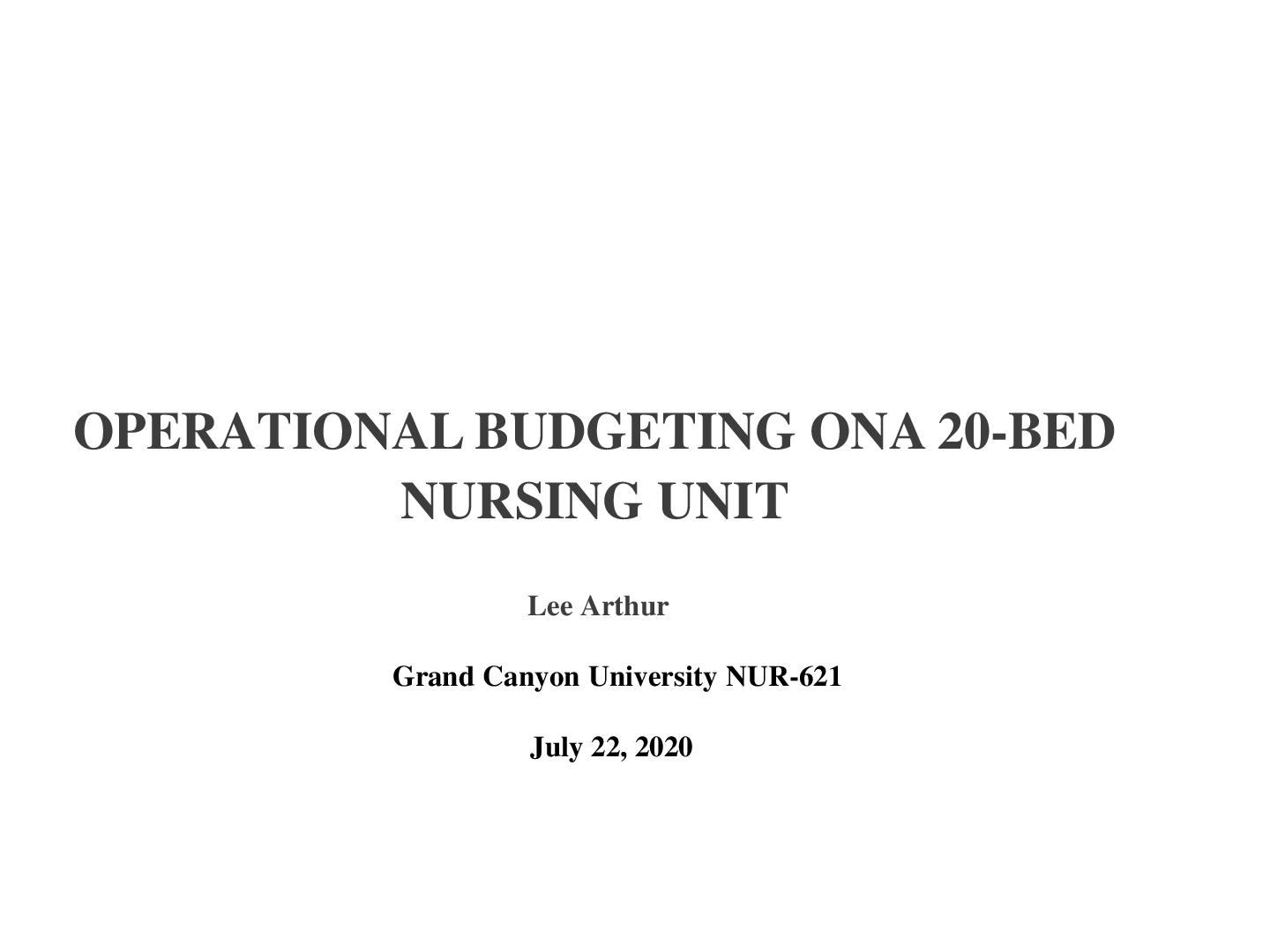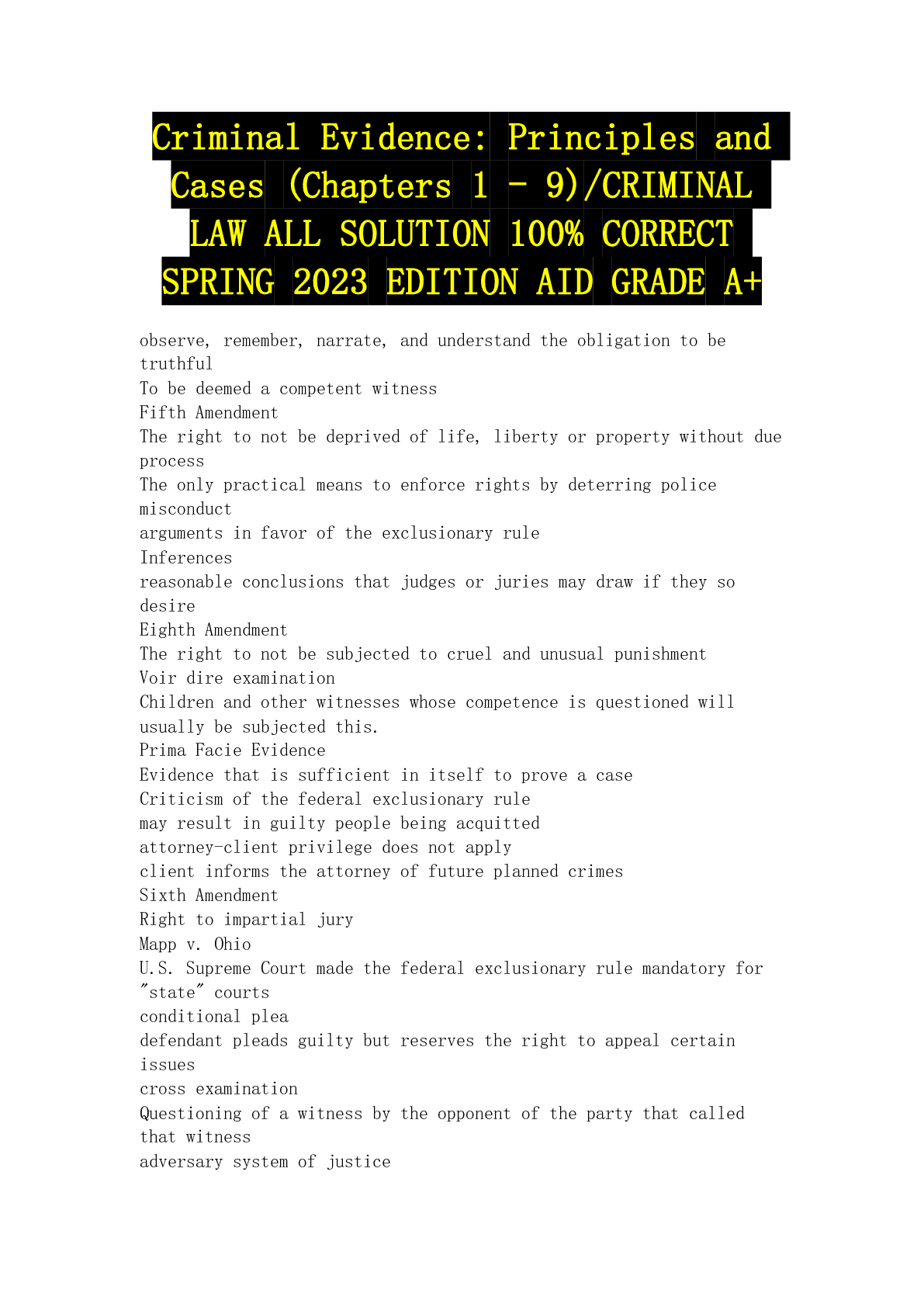*NURSING > CASE STUDY > Case Study: Mrs. J. Topic 1 Assignment ALL ANSWERS 100% CORRECT SPRING FALL-2021/2022 LATEST GUARA (All)
Case Study: Mrs. J. Topic 1 Assignment ALL ANSWERS 100% CORRECT SPRING FALL-2021/2022 LATEST GUARANTEED GRADE A+
Document Content and Description Below
Case Study: Mrs. J. Heart failure and chronic obstructive pulmonary disease are progressive diseases that affect the cardiovascular system. These diseases are common in elderly patients who have ot... her underlying conditions such as high blood pressure. Patients who smoke or those that are exposed to environmental toxicants are prone to succumbing to heart failure. In this case, the medical history of a 63-year-old married woman will be studied and her clinical manifestations evaluated. Evaluation of Clinical Manifestations Clinical manifestations are the signs and symptoms a patient may have that indicate an abnormality or a disease. From Mrs. J’s medical information, she has objective and subjective manifestations, which include anxiety, fatigue, pain, nausea, inactivity (could not eat or drink by herself), coughing, bloody sputum (Indicating infection), dyspnea, abnormally high heart rate, high respiratory rate, and blood pressure. Upon hospital admission, her body temperature was above normal, accounting for her fever, the rhythm of her heartbeat was irregular, and her liver was enlarged, causing malaise. Evaluation of Nursing Interventions The administered medication was based on the severity of the symptoms and the emergency condition since the patient was placed in the Intensive Care Unit (ICU). Furosemide (Lasix) and enalapril (Vasotec) are both antihypertensive medications. Administration of furosemide was aimed at the increasing loss of excess water from the patient’s body which might have resulted due to heart failure. Enalapril was meant to reduce high blood pressure by relaxing blood vessels that might have narrowed due to the production of angiotensin. Resulting in normal blood flow in the patient’s body would help reduce fatigue and increase body activity. Metoprolol (beta-blocker) acts by slowing down the heart rate, restoring it to normal, and relieving dyspnea symptoms. IV Morphine sulphate, like an opioid, was to relieve the patient from pain. ProAir HFA is a bronchodilator that helps the patient breathe without coughing by opening up the airways (Fanny et al., 2016). Flovent HFA effectively reduces inflammation in the lungs enabling the patient to breathe and not produce bloody sputum. Oxygen delivery at 2L/NC was necessary to prevent hypoxemia. Improve gas exchange and support activity, allowing the patient to self-feed and perform Activities of Daily Living (ADLs) independently [Show More]
Last updated: 2 years ago
Preview 1 out of 8 pages

Buy this document to get the full access instantly
Instant Download Access after purchase
Buy NowInstant download
We Accept:

Reviews( 0 )
$11.50
Can't find what you want? Try our AI powered Search
Document information
Connected school, study & course
About the document
Uploaded On
Jun 17, 2022
Number of pages
8
Written in
Additional information
This document has been written for:
Uploaded
Jun 17, 2022
Downloads
0
Views
86



















